All about fertilizing nitrophoska

Many people know about nitrophos since the times of the USSR. Even then, she was in great demand among ordinary gardeners and summer residents, as well as specialists in the agricultural industry. Nitrofoska is a classic that, as you know, does not age or die. Therefore, now, as before, this fertilizer is actively used to restore soil fertility and increase yields.
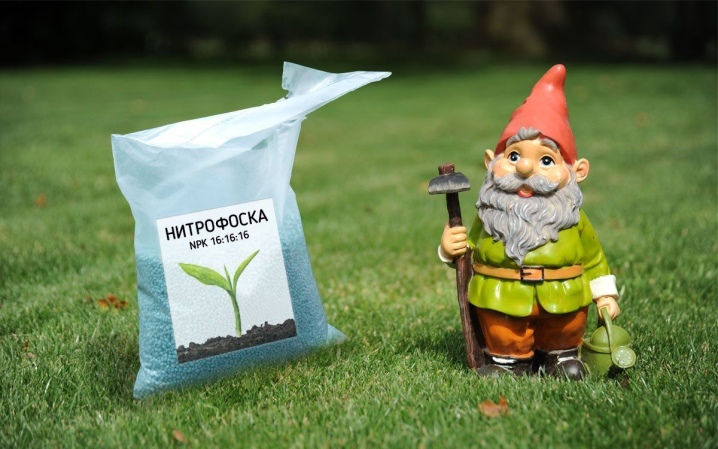
Peculiarities
First, consider what a nitrophoska is. This name means complex mineral composition for soil enrichment and plant nutrition. This type of fertilizer is produced in the form of white or blue granules... It is by color that you can immediately distinguish this substance from nitroammophoska, with which it is often confused. Nitroammophoska has a pink tint.
Nitrophoska granules do not cake for a long time. In the ground fertilizer components in a short time decompose into ions, which makes them easily digestible for plants. Nitrofoska is a universal fertilizer, since it can be used on any type of soil.
But a better result is shown on acidic and neutral soils.
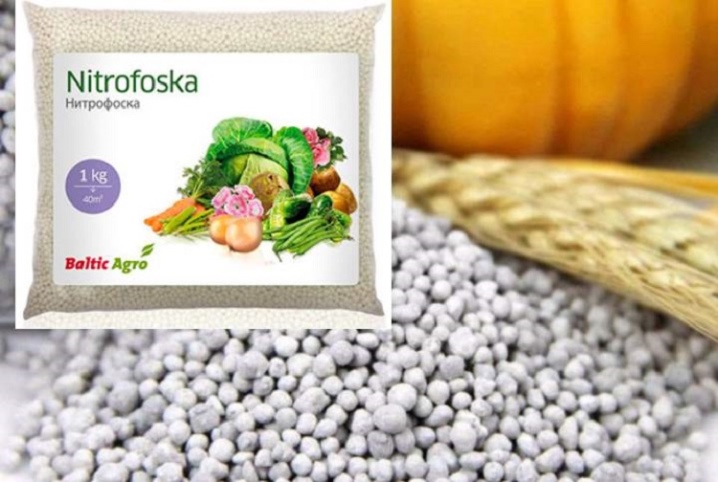
Composition
The chemical formula of this unique product is based on the following main chemical elements:
nitrogen (N);
phosphorus (P);
potassium (K).
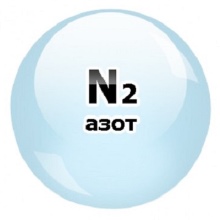
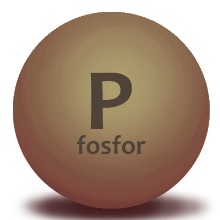
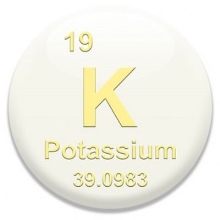
These components are unchanged, only their content changes as a percentage. The effect of top dressing appears almost instantly due to the nitrogen content. And due to phosphorus, this effect remains effective for a long time. Besides, the composition of nitrophoska includes other elements useful for plants and soil:
zinc;
copper;
manganese;
magnesium;
boron;
cobalt;
molybdenum.
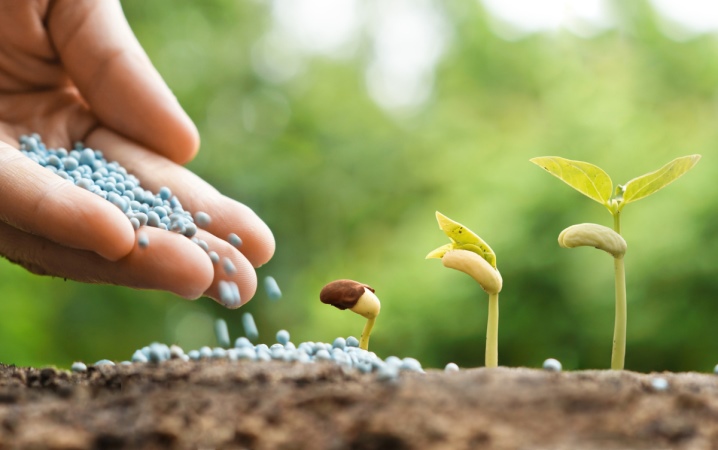
When choosing a fertilizer in the form of granules it is better to give preference to a composition with approximately equal proportions of the main components (N = P = K)... If you need top dressing in a dissolved form, then you need a fertilizer with a significant magnesium content. For such a case, the following ratio of components in percent is the most optimal:
nitrogen - 15%;
phosphorus - 10%;
potassium - 15%;
magnesium - 2%.

Varieties
According to the quantitative indicators of the main components in the composition of the fertilizer, several types of nitrophoska are distinguished. Let's consider them in more detail.
Sulfuric acid (or sulfuric acid)
This substance is characterized by high sulfur content. The apatite material serves as the basis for creating such a fertilizer. The production process is based on a nitric-sulfuric acid scheme. When sulfur enters the soil, it increases the resistance of plants to diseases, temperature extremes, lack of water and increases their yield.
Sulfur is especially needed by plants from the legume family, as well as cabbage, onions, garlic, potatoes and tomatoes.

Sulfate
It is characterized by a high calcium content. Such fertilizer made from apatite emulsion, which is treated with calcium chloride. When calcium is added to the soil, its physical properties improve, acidity and salinity decrease. The seeds germinate better, the quantitative indicator of full-fledged ovaries increases.
Many flowering ornamental plants, berry bushes and crops used in landscape design need sulfate nitrophosphate.
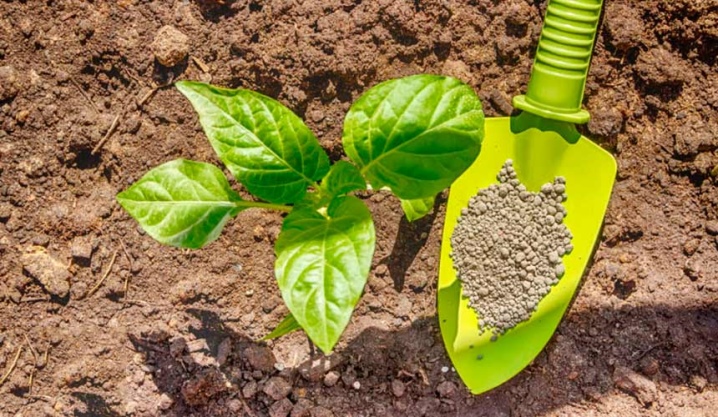
Phosphorite
This type of nitrophoska contains a large amount of phosphorus salts, which are in dire need of vegetable crops. Apatite or phosphorite is taken as a basis. The production process involves the simultaneous treatment with ammonium sulfate. The use of such fertilizer is recommended for sod-podzolic soils, sandy loam soils and heavy loams. Due to the high content of phosphorus in berries, vegetables and fruits, nutritional quality is improved, and germination increases and accelerates.
Phosphate nitrophoska also stimulates flowering and prolongs the life of plants.
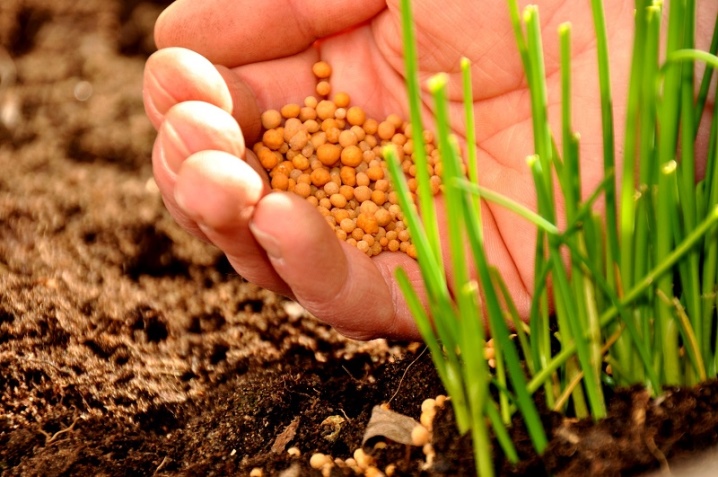
Advantages and disadvantages
If we carry out a comparative analysis of nitrophoska with other fertilizers, then its following advantages will be obvious.
The optimal percentage combination of the main components allows to achieve sufficient soil mineralization with excellent assimilation of the necessary microelements by plants.
The constituent components of the fertilizer are quickly and easily released into the soil, absorbed and assimilated by plants through the root system.
Fertilizer is applied to the soil in various ways - you can choose the most convenient option for yourself.
Possibility of application to different soils by composition and type.
High keeping rates are provided due to the surface treatment of granules with a condensing composition. Until the expiration date, the fertilizer will not clump and compress.
Economical consumption of granules (for 1 sq. M. They will need from 20 to 40 grams).
The granular form is convenient when used dry or dissolved.
With proper application and adherence to dosages, nitrates do not accumulate in the soil and plants. Thanks to this, the resulting crop is characterized by high indicators of environmental friendliness.

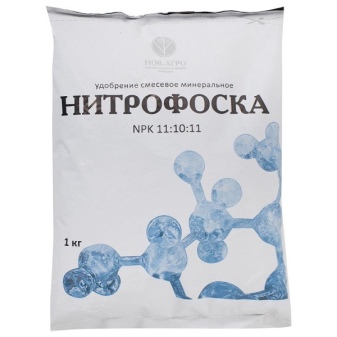
Nitrophoska also has negative characteristics.
The short shelf life of the fertilizer (due to the high volatility of the nitrogen compound).
The components are explosive and flammable. Therefore, during storage and use, fire safety measures must be observed.
During the ripening of the fruits, the effectiveness of fertilization is sharply reduced (there is a need for additional feeding).
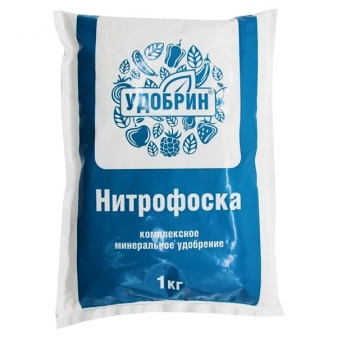

Application
Despite the positive characteristics and features, nitrophoska is still not an absolutely safe fertilizer. You need to apply a certain amount of fertilizer to the soil. Compliance with the dosage will exclude a detrimental effect on plants and human health. Here are some recommendations, the observance of which will allow you to navigate the dosage of the drug for various cases.
Each fruit tree requires only 250 grams of fertilizer. Small shrubs (currants, gooseberries and others) require no more than 90 grams of nitrophoska for each planting hole. Large shrub species, which are, for example, irga and viburnum, need 150 grams of feeding.
Conifers respond well to nitrophoska application. Fertilizer is initially added at planting. Its amount is calculated depending on the age and size of the seedling. For example, a medium-sized thuja seedling will require no more than 40 grams. The next application of nitrophoska can be carried out only after 2 years.
For indoor flowers, it is necessary to dilute 50 grams of the drug in 10 liters of water. Spraying is carried out with this solution.
Mature ornamental trees need more fertilization, therefore, under each such plant, about 500 grams of nitrophoska should be applied. You will first need to loosen and water the near-stem zone.
Indoor plants can also be fed with this compound. In these cases, no more than 130 grams of the substance will be required for each square meter.
Outdoor vegetable crops require a maximum of 70 grams per 1 sq. m landing.
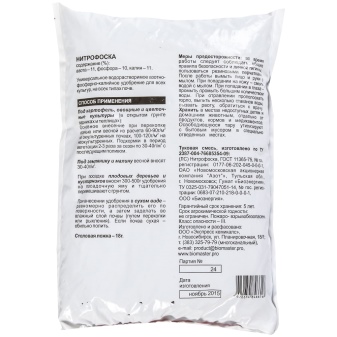
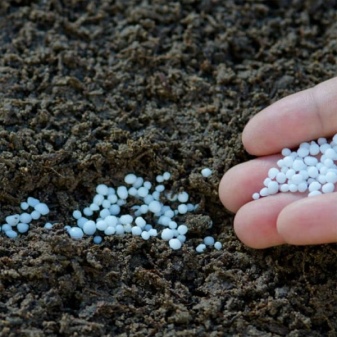
The introduction of nitrophoska is made in accordance with some mandatory rules. Let's list them.
For perennial crops, it is better to use dry fertilizer, but the soil must be pre-moistened and loosened. These works should take place in the spring.
It is better to carry out the introduction of nitrophoska in rainy weather.
It is permissible to carry out dressings in the fall during the digging of the site.
Seedlings during the growing period can also be fed with nitrophos, which will strengthen the young shoots. It is better to carry out this procedure a week after the pick. The fertilizer must be dissolved (16 g per 1 liter of water). Re-feeding is carried out during planting in the ground. To do this, 10 granules are poured into each hole, which are mixed with wet soil.
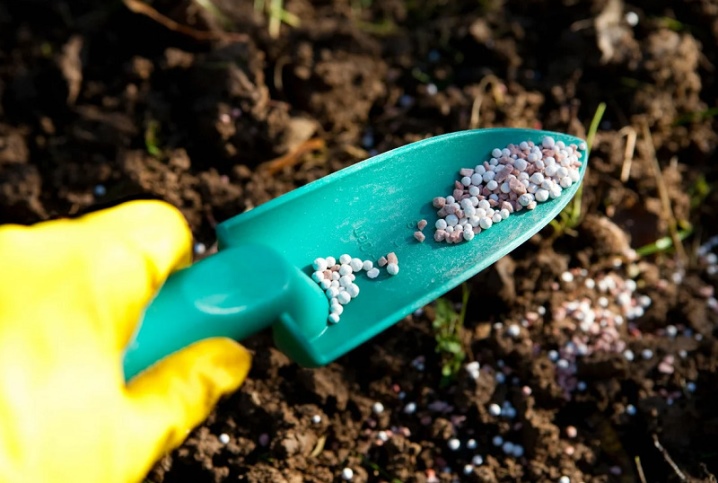
Each crop is special and unique, so the feeding process will be different. Consider the instructions for making nitrophoska for the most popular crops.
Potato is fed during planting. To do this, a tablespoon of fertilizer is poured into each hole and mixed with the soil. It is much easier to apply the nutrient in the fall or early spring. For each square meter, it is enough to add 75 grams of the substance.
Cabbage is fed several times. The first fertilization is carried out at the stage of growing seedlings. The second treatment is carried out during the planting of shoots in the ground, if before that nitrophoska was not applied in the garden. Add a teaspoon of the nutrient mixture to each well. The third time, nitrophosphate can be applied after 17 days, for which 25 g of fertilizer is used for 10 liters of water. For early and mid-season varieties, the third feeding is not needed.
Cucumbers respond positively to the introduction of nitrophoska - their yield increases to 22%. Fertilizer is best applied in the fall to the area that will be occupied by cucumbers. On the third day after planting the seedlings, you can fertilize it with a nutrient solution (10 liters of water per 35 g of substance). Pour 0.5 liters of nutrient solution under each bush.
Winter and spring garlic fertilized in spring. It is better to use urea first, and after 2 weeks add nitrophosphate in a dissolved form. 10 liters of water will require 25 g of fertilizer. This amount is spent on 3 square meters. m landing.
Raspberries demanding on the nutritional value of the soil, so feeding must be carried out every spring. For 1 sq. m you will need to use up to 45 g of granules.
Strawberry gardening also needs fertilizing, which can occur in the spring and summer. In addition, during planting, which occurs in August, 5 pellets can be placed in each hole.
Ornamental flower crops it is better to feed with a sulfate type of fertilizer. A solution is added to each well (25 g per 10 L of water).
For grapes it is necessary to carry out foliar spraying. This procedure should be carried out after sunset to protect the plant from burns.

Precautionary measures
When working with any fertilizer, you must follow the rules and precautions. Nitrofoska is no exception, therefore, when using it, it is important to adhere to the following tips from experts:
gloves and respiratory protection must be used; without them, work with fertilizer is prohibited;
it is impossible to manipulate the nitrophos near an open fire, since many components are explosive (the minimum distance to the fire source is 2 meters);
in case of contact of the fertilizer in a pure or diluted form on the mucous membranes (mouth, nose, eyes), it is necessary to rinse them with plenty of water;
after completing work with the preparation, it is necessary to rinse open areas of the body with warm water and soap.
In order for nitrophoska to retain its properties until the end of the shelf life, it must provide special storage conditions:
storage is prohibited near heating elements and sources of open fire;
in a room with nitrophos, the maximum humidity should not exceed 60%;
when stored with other chemicals, fertilizer components may react;
the nitrophoska should be located in a place that children and pets do not have access to;
for the transportation of fertilizer, ground transport is used; during transportation, the temperature regime must be observed.
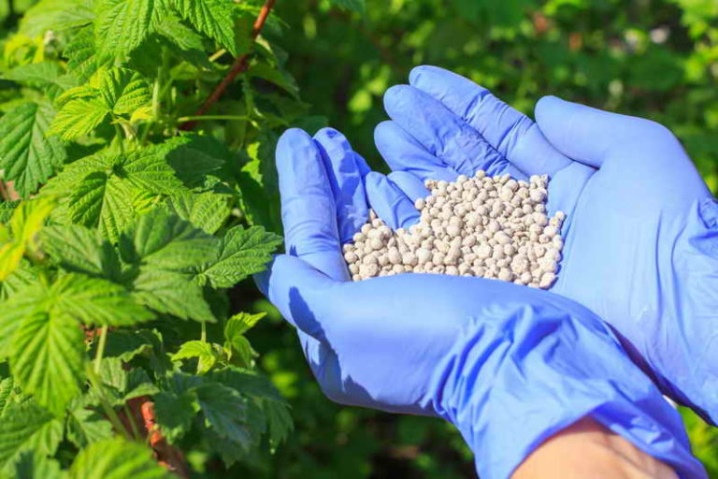
What can be replaced?
If nitrophoska was not on sale or the previously purchased mixture has already become unusable, then there are alternative options to solve the problem with fertilizers. Here's what the experts suggest for such cases.
Nitrophoska in the amount of 100 g is completely replaced by such a mixture: 30 g of ammonium nitrate, 20 g of superphosphate and 25 g of potassium sulfate.
Nitroammofosk and Azofosk are more advanced versions of nitrophoska. They differ from the original fertilizer in the dosage of various components. In order to understand the dosage and not be mistaken in grams when using these substances instead of nitrophoska, you must carefully study the composition and instructions for use of each of these drugs.
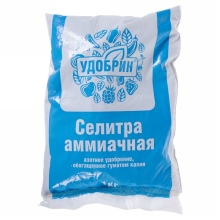
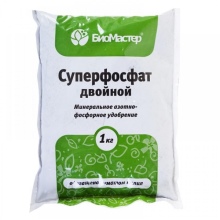
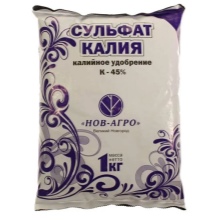
You can watch a video review of nitrophoska fertilizer in the next video.













The comment was sent successfully.